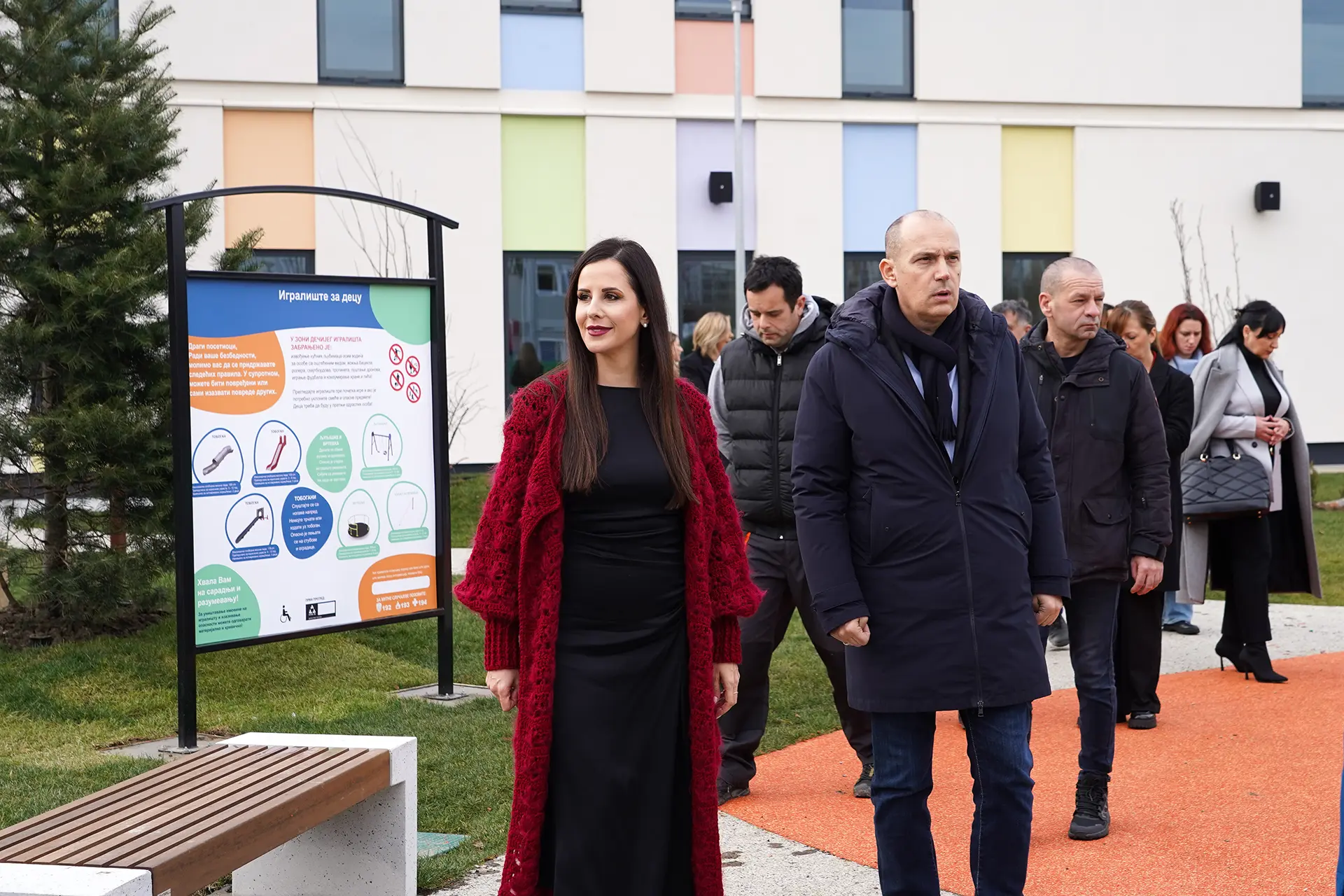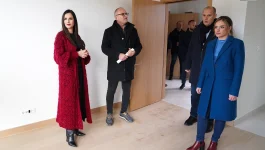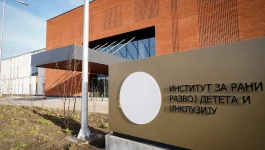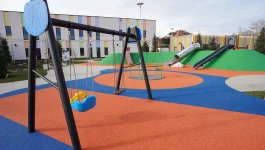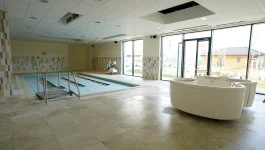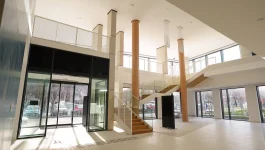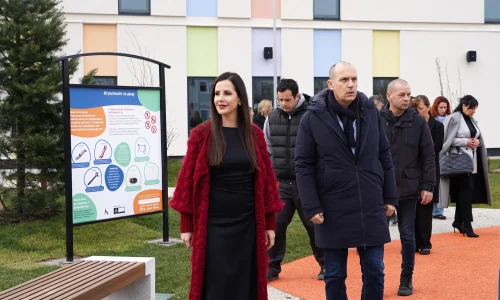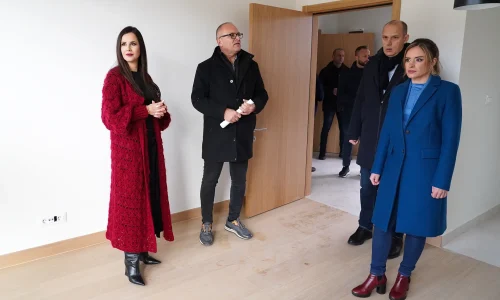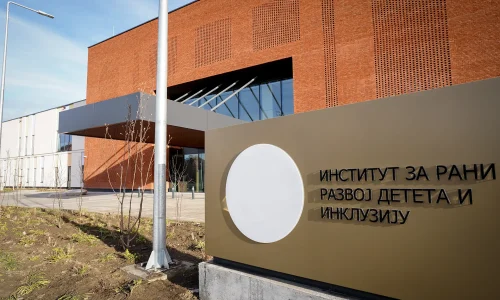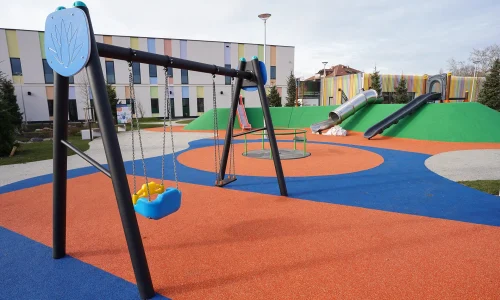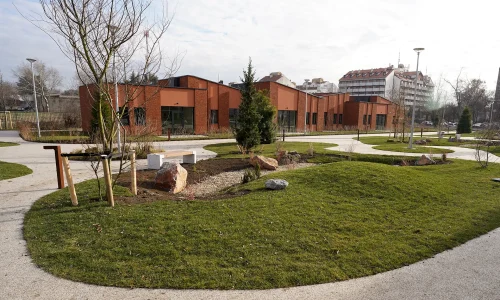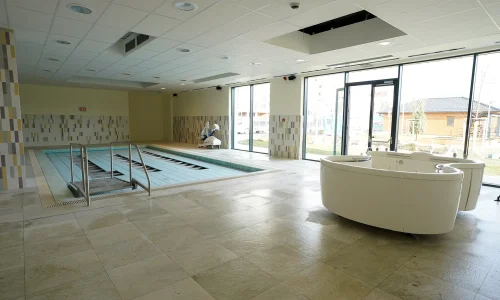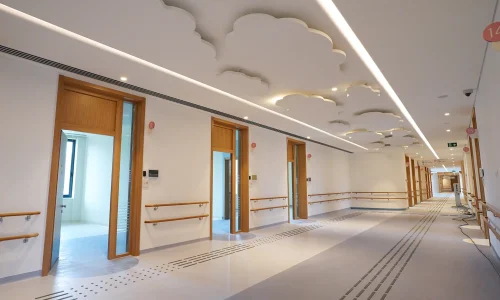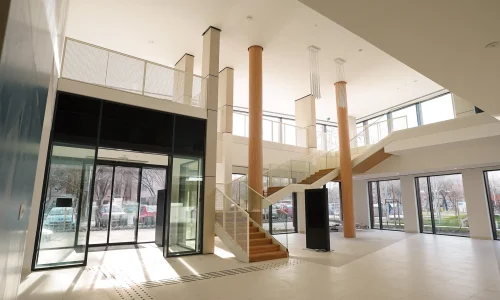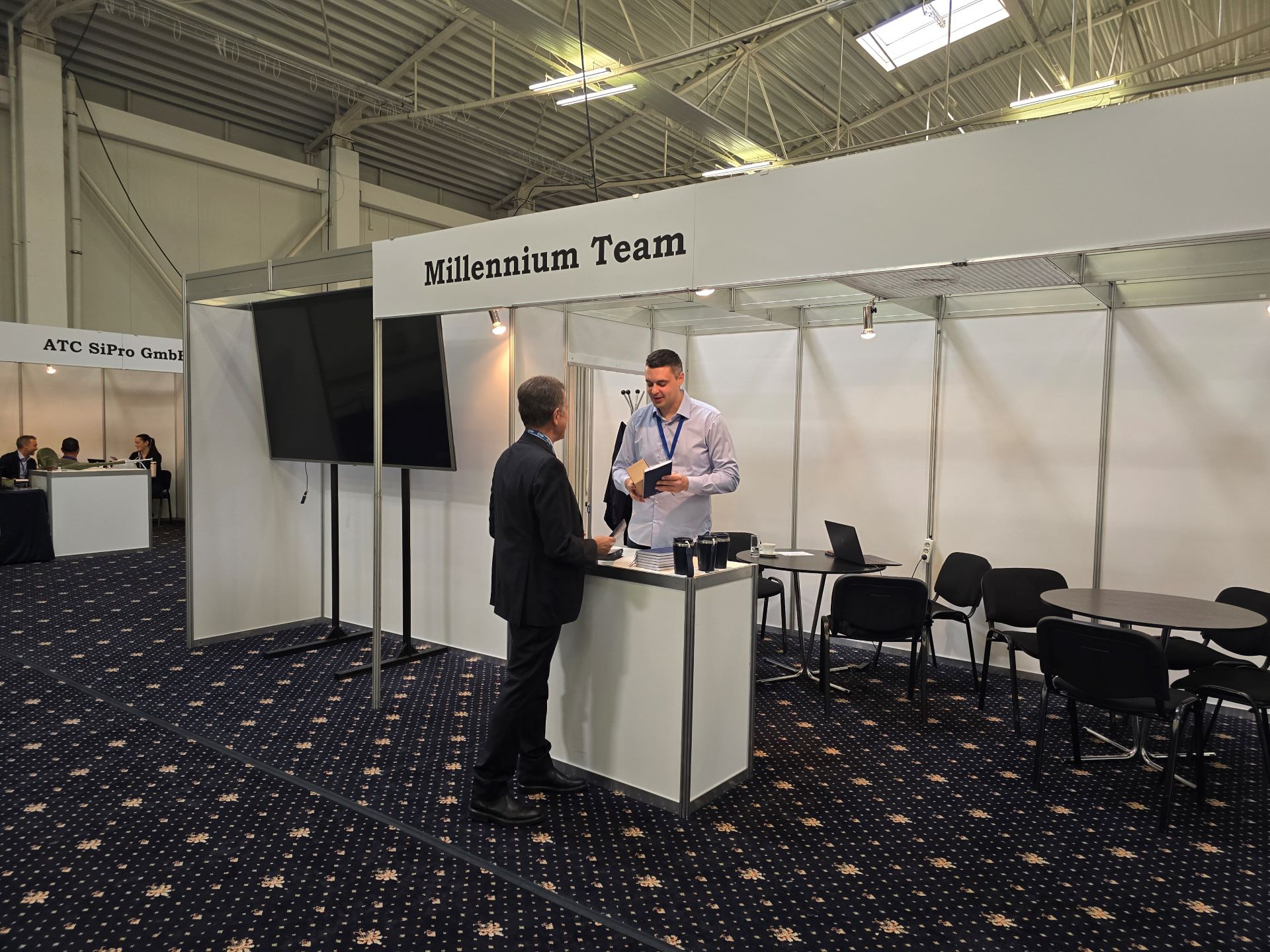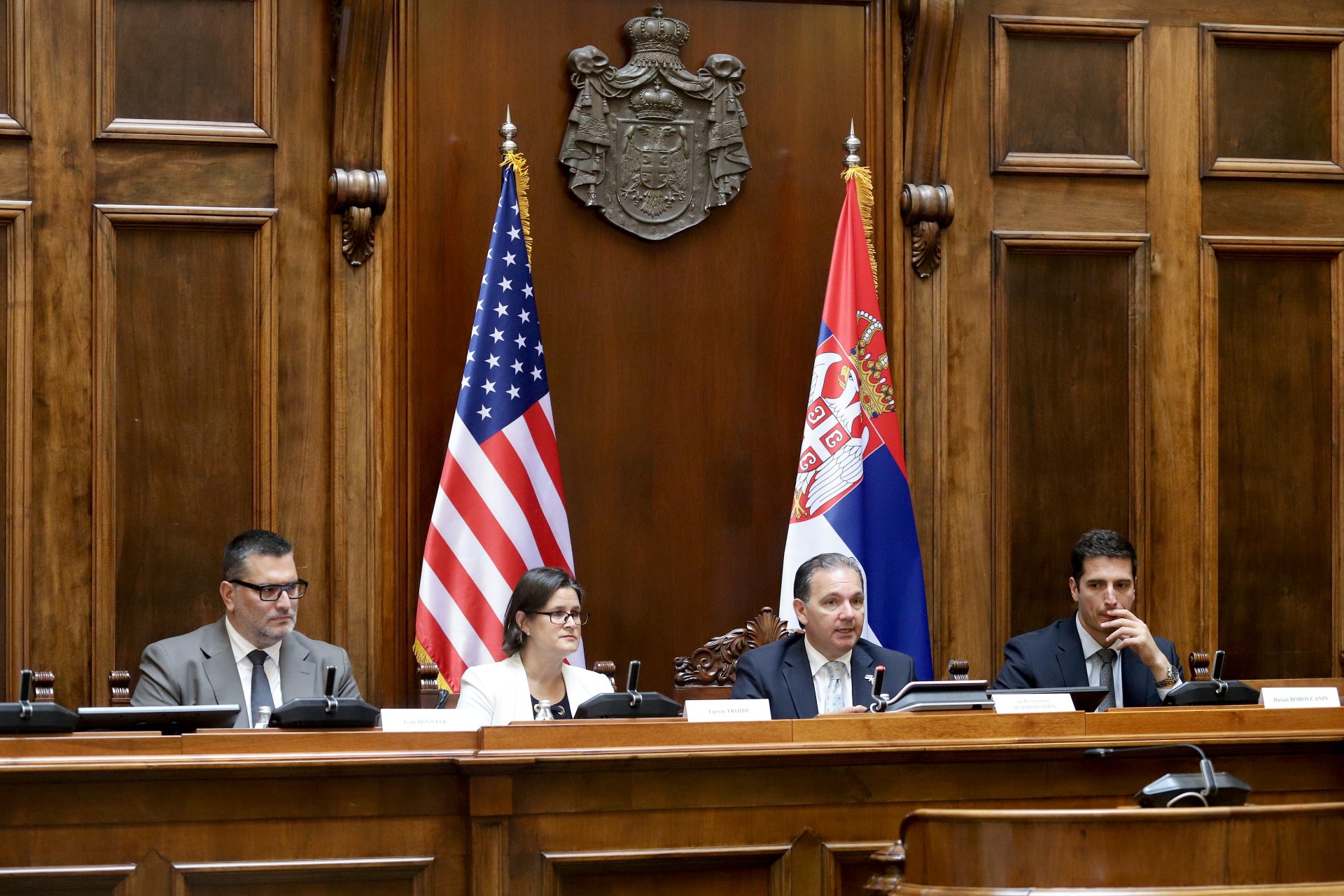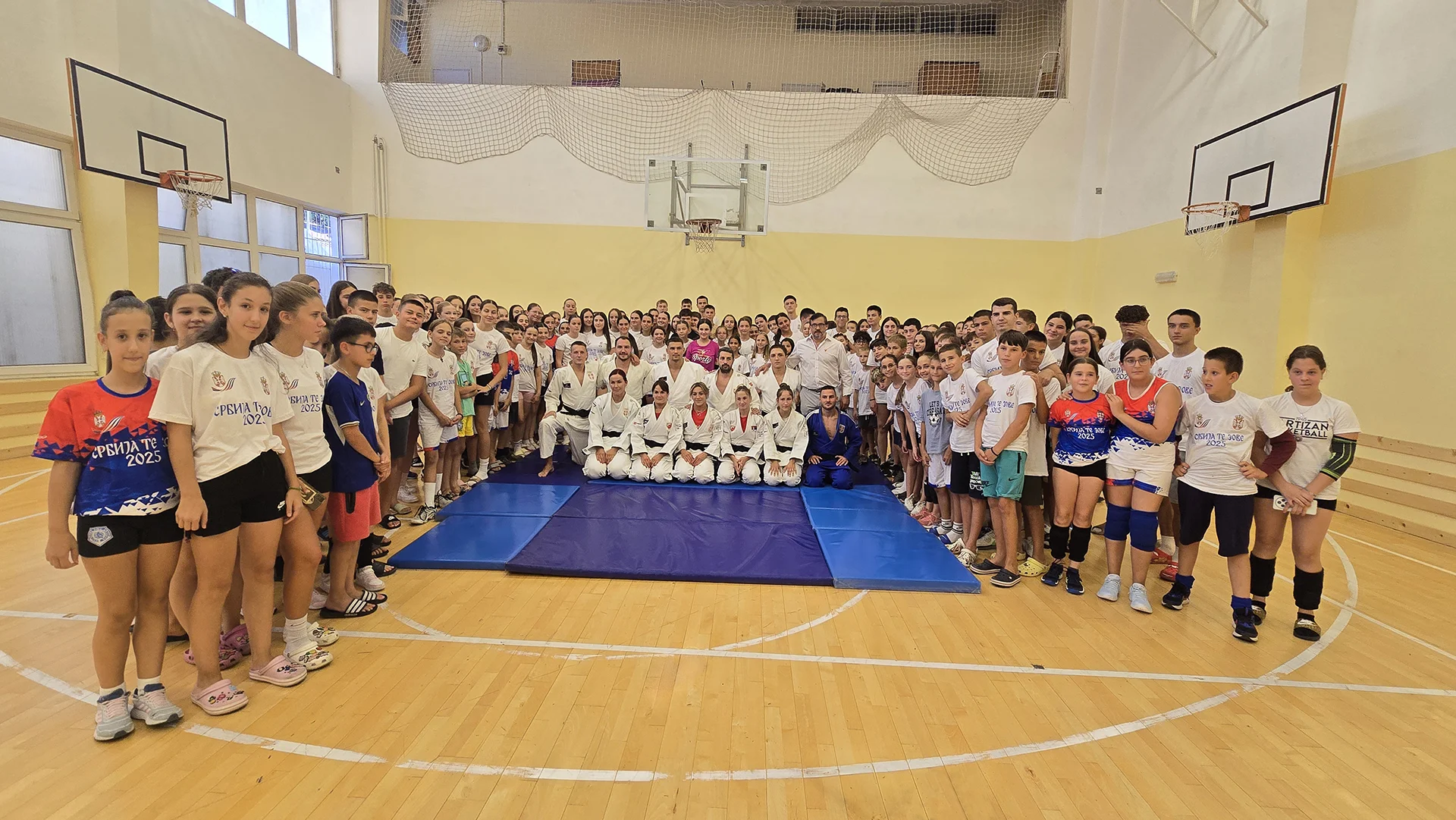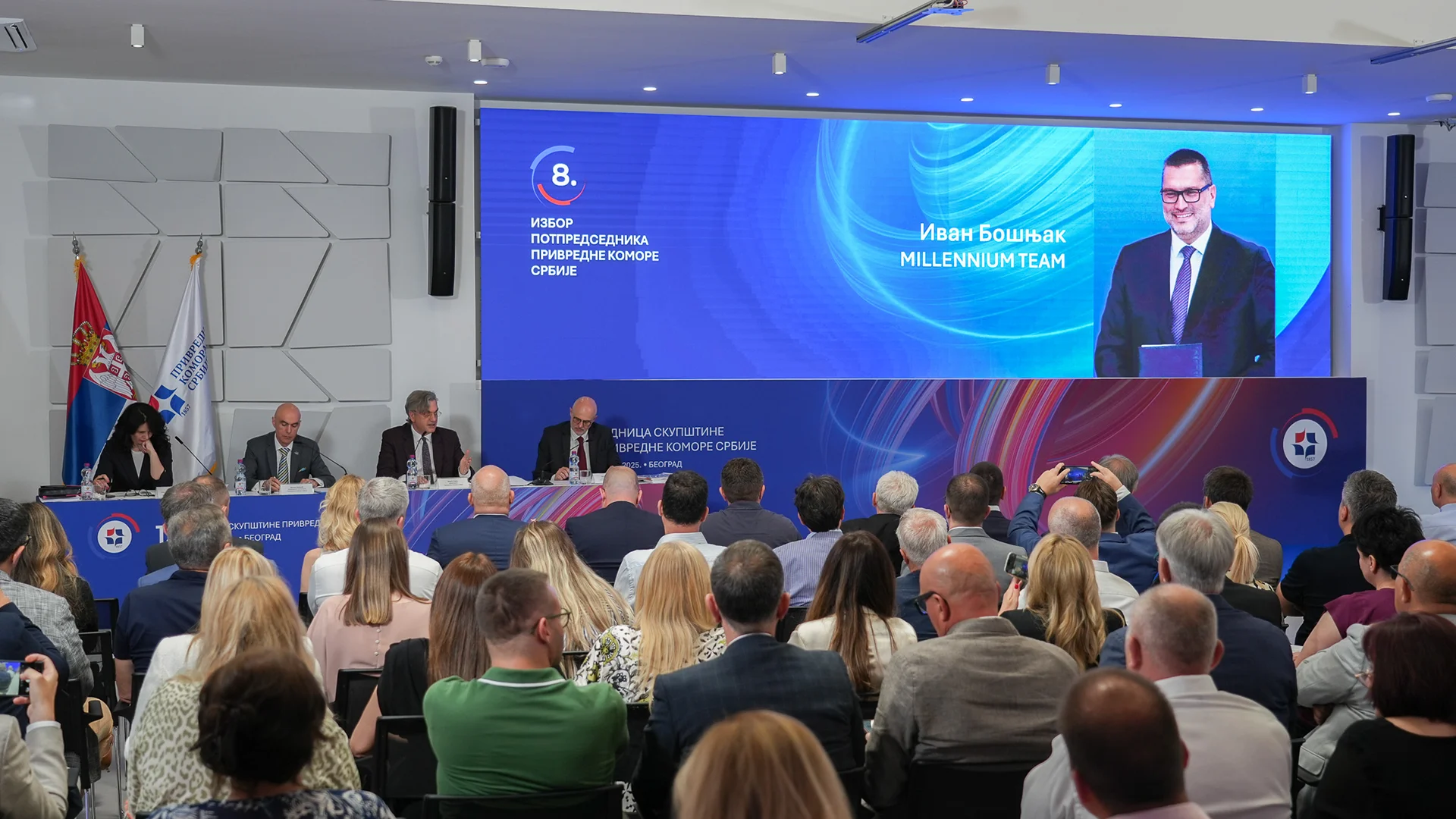The wife of the President of the Republic of Serbia, Tamara Vučić, along with Dr. Zlatibor Lončar, the Minister of Health, and Milica Stamenkovski, the Minister for Family Care and Demography, visited the future Institute for Early Child Development and Inclusion at Bežanijska kosa, Belgrade. The complex, in which Millennium Team participated in the construction, has been completed, and after furnishing, it will be ready to welcome more than 400 children with developmental disabilities and their parents every day.
“When we visited the construction site of, as its working title was at the time, the Center for Early Child Development and Inclusion just over a year ago. Now, it’s known as the Institute for Early Child Development and Inclusion. Back then, over a year ago, it was still in the gray phase. Now we can see the building in all its glory,” said Tamara Vučić. “I believe and hope that in the spring, symbolically, when everything blooms and grows, we will ceremoniously open this Center, and it will begin operations.”
She illustrated the significance of this Center, which will be part of the tertiary healthcare system under the Ministry of Health, by citing that 5% of children have serious developmental difficulties, and 12% of the youngest have minor issues or developmental risks. She also added that great care has been taken to create an environment that feels like a family home, wherein children can feel the most comfortable.
“This building will serve children with developmental disabilities and their parents, to help identify problems early on and address them as quickly as possible, instead of letting them wander around as was the case in the past,” emphasized Minister Lončar.
Minister Milica Stamenkovski highlighted that she was particularly pleased that the complex includes facilities where families from rural areas can stay overnight and live for several days in Belgrade while their children undergo treatment and therapy.
The complex covers a plot of 2.1 hectares and has 17,718 square meters of space, of which 17,256 square meters belong to the main building and 316 square meters to the bungalow section, which has six accommodation units. There is also a 146-square-meter barn for keeping animals used in hippotherapy. The main building includes a therapeutic block with a pool, a diagnostic block with assistive technologies, a research center with meeting rooms, and spaces for associations dealing with early child development. The facility also includes offices for administration, two apartments for guest professors, and an underground garage with 120 parking spaces.
The building was designed and constructed to meet all green building standards. One of the conditions was that at least 70% of the area be green. This was achieved not only by greening the ground level but also the rooftops,” explained Dejan Miladinović, the project manager from Millennium Team. “The building has an autonomous heating, air-conditioning, and ventilation system. We have 90 geothermal probes, each 130 meters deep, and a solar power plant with 300 kWh capacity, which will be connected to the electrical grid and can distribute excess energy.”
Over 13,000 cubic meters of concrete, 1,450 tons of reinforcement, and about 9,000 square meters of prefabricated panels were used in the construction of the Institute for Early Child Development and Inclusion.
